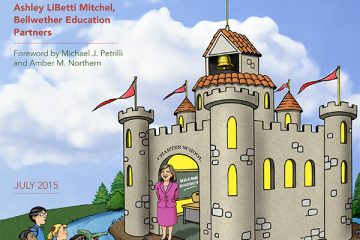Whether you think the end game of the current “mixed economy” of district and charter schools should be an all-charter system (as in New Orleans) or a dual model (as in Washington D.C.), for the foreseeable future most cities are likely to continue with a blend of these two sectors. So we wanted to know: Can they peacefully co-exist? Can they do better than that? Can they actually collaborate in the service of students, families and the public interest?
We teamed up with Public Impact to address these very questions, in the context of five cities that have among the best conditions for district-charter collaboration: Boston, Cleveland, Denver, the District of Columbia and Houston.*
As we examined these evolving relationships, we found markedly different forms of engagement reminiscent of how international relations often play out. From Washington, D.C.’s “superpower summit” through Boston’s “protectionism under pressure,” the shifting district-charter interplay highlighted in this report may begin to point the way to a new world order in public education.
* Houston is a lesson in “Isolationism” as each sector mostly pursues its own course with minimal contact between them (so much so that we omitted it from full discussion in the report).




